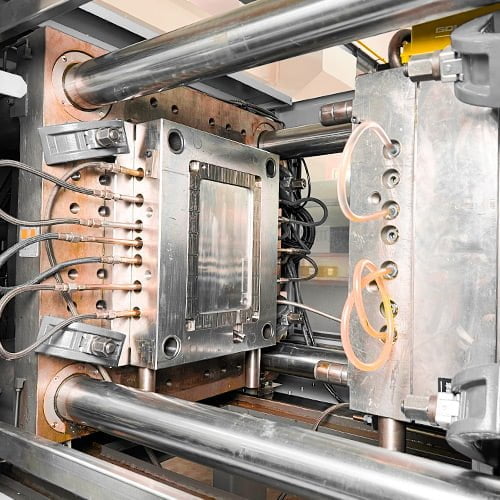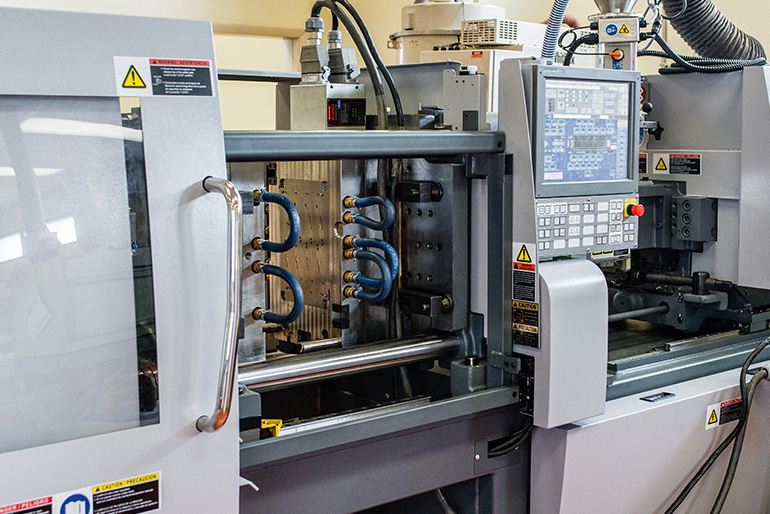The Function of Plastic Injection Molding in Creating Economical Industrial Parts
The Function of Plastic Injection Molding in Creating Economical Industrial Parts
Blog Article
Recognizing the Fundamentals of Plastic Injection Molding Processes
Plastic shot molding works as a keystone of modern production, giving a systematic strategy to generating complex parts with accuracy. This procedure not only includes the fundamental steps of melting and infusing products right into mold and mildews but likewise includes a nuanced understanding of different affecting variables, such as temperature level and stress. As industries significantly require performance and quality, the ins and outs of this technique come to be extra vital. Discovering these essential elements could expose exactly how even minor modifications can result in substantial improvements in production outcomes, questioning regarding the potential for advancement in this well established process.
What Is Plastic Injection Molding?
Plastic injection molding is a widely made use of manufacturing procedure that changes thermosetting and thermoplastic products into precise and complicated forms. This technique is favored for its capacity to create high quantities of similar get rid of exceptional precision, making it an essential technique in different sectors, including vehicle, durable goods, and clinical tools.
The process includes thawing the chosen plastic material and infusing it right into a mold under high pressure. The mold and mildew, made to the specifications of the desired part, allows the molten plastic to form as it strengthens and cools down. When the product has hardened, the mold is opened up, and the ended up component is expelled.
Plastic injection molding provides a number of benefits, including reduced waste, consistency in production, and the capacity to incorporate elaborate styles that may be testing with various other manufacturing methods. Furthermore, it sustains a wide variety of products, each giving distinct properties that can be tailored for specific applications. As industries continue to innovate, plastic injection molding continues to be at the center, allowing the development of advanced products that satisfy progressing customer demands.
The Shot Molding Refine
The shot molding process is a sophisticated method that includes a number of crucial phases to generate premium plastic elements. At first, plastic pellets are fed into a heated barrel where they are merged a thick fluid. This molten plastic is after that injected under high stress into a precision-engineered mold and mildew, which forms the product into the wanted kind.
When the mold is filled, the plastic is enabled to strengthen and cool, taking the form of the mold dental caries. Air conditioning time is essential, as it affects the cycle time and the last residential properties of the shaped component. After enough air conditioning, the mold and mildew opens up, and the finished component is expelled using ejector pins.

Materials Used in Injection Molding
Various products can be used in the injection molding process, each offering distinct buildings that satisfy certain applications. One web of the most typically used materials consist of thermoplastics, thermosetting plastics, and elastomers.

Thermosetting plastics, like epoxy and phenolic resins, undertake a chemical adjustment throughout the curing process, causing a rigid, stringent framework. These materials are ideal for applications needing high heat resistance and structural stability, typically made Click This Link use of in electrical insulators and vehicle parts.
Elastomers, consisting of silicone and rubber-based products, supply flexibility and durability. Their special residential or commercial properties make them ideal for applications that demand elasticity, such as gaskets and seals.
In addition, specialized materials like bio-based plastics and composites are acquiring traction for their ecological benefits and improved performance attributes, expanding the extent of shot molding applications in numerous industries. Comprehending the residential or commercial properties of these materials is important for choosing the proper kind for details tasks.
Advantages of Shot Molding
Injection molding stands out as a highly reliable production process that uses numerous advantages for creating intricate components with accuracy. Among the most significant advantages is the ability to create intricate styles that would certainly be impossible or challenging to achieve with other approaches (Plastic Injection Molding). The procedure enables limited tolerances and comprehensive features, making sure premium elements
Furthermore, injection molding is recognized for its fast production capabilities, making it an ideal selection for high-volume manufacturing. When the mold is produced, parts can be generated swiftly, decreasing lead times and enhancing overall performance. This efficiency not just lowers manufacturing expenses but also offers a competitive side out there.
The flexibility of materials used in shot molding further improves its appeal. A vast array of thermoplastics and thermosetting polymers can be utilized, permitting producers to pick products that ideal satisfy their details requirements, consisting of heat, strength, and adaptability resistance.
Moreover, the procedure minimizes waste, as excess material can commonly be reused and reused. This sustainability facet adds to a decreased environmental impact, making injection molding an accountable manufacturing choice. In general, the benefits of shot molding make it a favored method for many sectors.
Variables Affecting Item Top Quality
While numerous elements can affect product quality in injection molding, comprehending these aspects is vital for achieving optimal results. Key elements consist of material selection, refining parameters, and mold style.
Material choice plays a vital function, as different polymers exhibit distinct homes that influence flowability, stamina, and thermal security. Insufficient material choice can result in problems such as bending or insufficient filling.
Processing parameters, consisting of cycle, pressure, and temperature time, should be thoroughly managed. Variations in these settings can result in disparities partially measurements and surface area coating. Excessively high temperatures may cause deterioration of the polymer, while insufficient pressure can result in short shots.
Mold and mildew layout is equally essential, as it determines the circulation of the molten plastic and the cooling procedure. Badly made mold and mildews may cause uneven air conditioning rates, causing dimensional mistakes and recurring stress and anxieties.

Conclusion
To conclude, check that plastic injection molding functions as a crucial production process that enables the reliable production of high-quality elements. Proficiency of the injection molding process, including the understanding of products and the impact of various factors on item high quality, is crucial for accomplishing optimal outcomes. The benefits of this technique, such as cost-effectiveness and layout adaptability, more highlight its importance throughout numerous markets, solidifying its status as a recommended selection for high-volume manufacturing.
Plastic injection molding offers as a keystone of modern-day manufacturing, providing a systematic technique to generating intricate elements with accuracy.Plastic shot molding provides several benefits, including lowered waste, uniformity in production, and the capability to integrate elaborate layouts that may be challenging with various other manufacturing approaches (Plastic Injection Molding). As industries continue to innovate, plastic shot molding remains at the leading edge, enabling the growth of sophisticated items that meet advancing customer demands
The shot molding process is an innovative method that involves a number of key stages to generate top quality plastic elements.In final thought, plastic shot molding offers as an important production process that enables the reliable production of high-quality elements.
Report this page